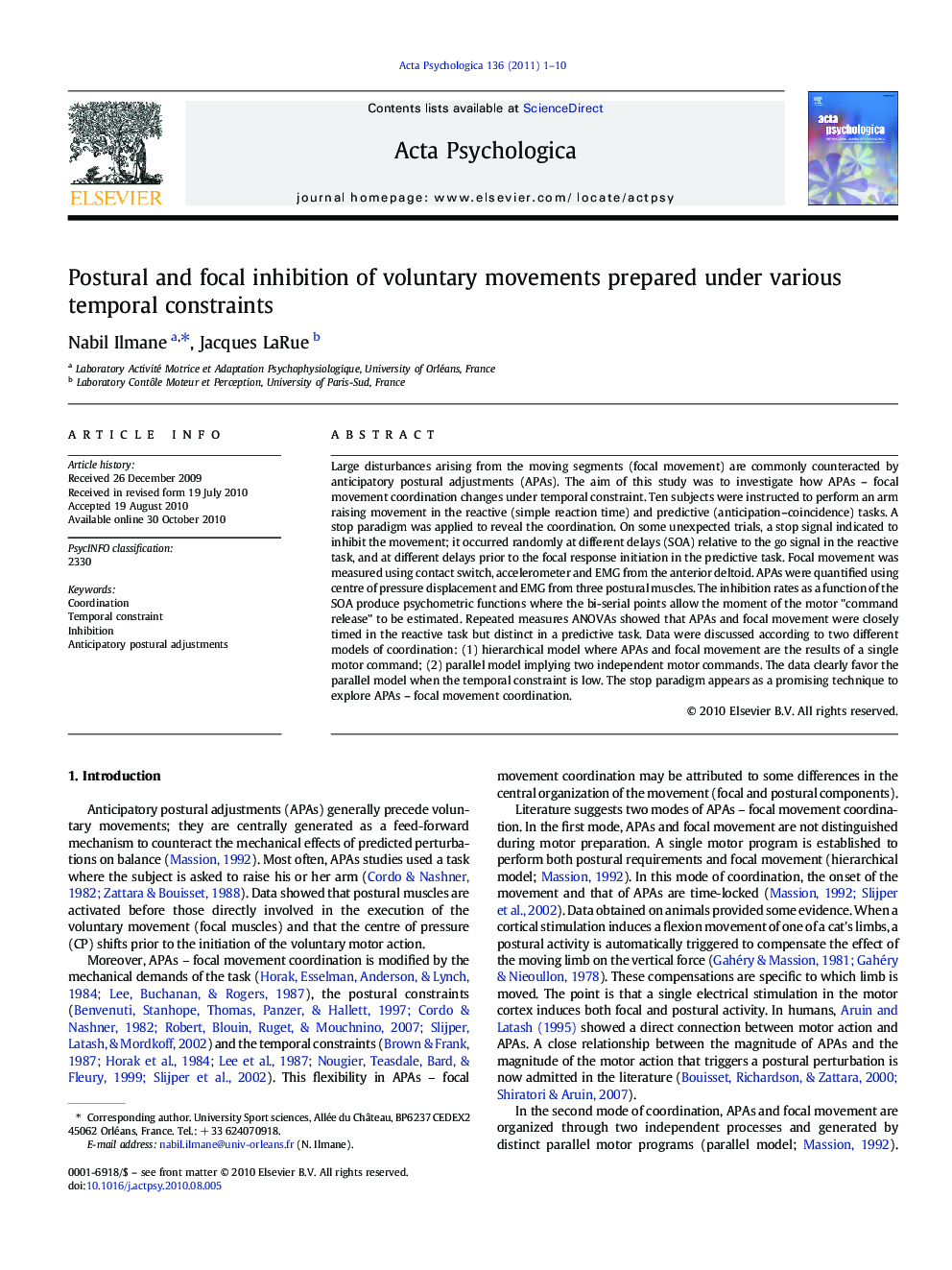| Article ID | Journal | Published Year | Pages | File Type |
|---|---|---|---|---|
| 920298 | Acta Psychologica | 2011 | 10 Pages |
Large disturbances arising from the moving segments (focal movement) are commonly counteracted by anticipatory postural adjustments (APAs). The aim of this study was to investigate how APAs – focal movement coordination changes under temporal constraint. Ten subjects were instructed to perform an arm raising movement in the reactive (simple reaction time) and predictive (anticipation–coincidence) tasks. A stop paradigm was applied to reveal the coordination. On some unexpected trials, a stop signal indicated to inhibit the movement; it occurred randomly at different delays (SOA) relative to the go signal in the reactive task, and at different delays prior to the focal response initiation in the predictive task. Focal movement was measured using contact switch, accelerometer and EMG from the anterior deltoid. APAs were quantified using centre of pressure displacement and EMG from three postural muscles. The inhibition rates as a function of the SOA produce psychometric functions where the bi-serial points allow the moment of the motor "command release" to be estimated. Repeated measures ANOVAs showed that APAs and focal movement were closely timed in the reactive task but distinct in a predictive task. Data were discussed according to two different models of coordination: (1) hierarchical model where APAs and focal movement are the results of a single motor command; (2) parallel model implying two independent motor commands. The data clearly favor the parallel model when the temporal constraint is low. The stop paradigm appears as a promising technique to explore APAs – focal movement coordination.
